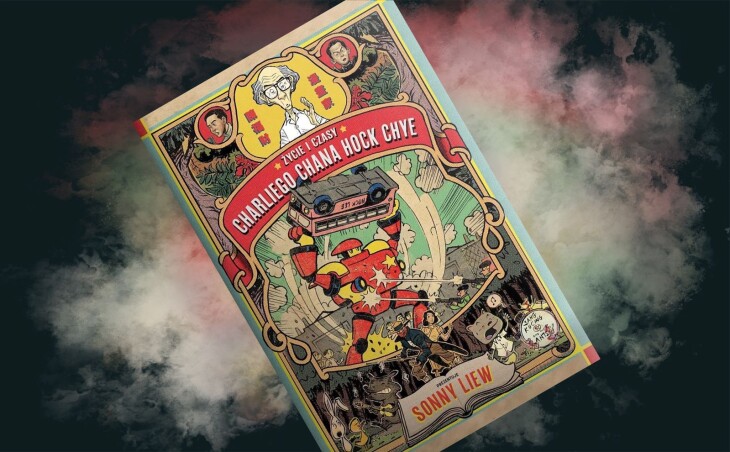This text should be dedicated to anyone who believes that there is no place for politics in the comic. That it spoils entertainment and art. But I prefer to devote it to the sewers of this world.
If you had lived in interesting times
The Art of Charlie Chan Hock Chye is a comic book that tells the history of Singapore from the 1950s to the present day. He shows it through the work of a fictional artist, a man who loves sequential pictures, who devoted his whole life to them. Charlie chose this medium not only because it’s fun to draw a giant robot or a superhero. After all, literature, including pictures, can talk about everything that is most important. Sonny Liew is a great demonstration of not only her ability to express tons of topical topics, but also how different means lead to a different view of a topic. And finally – how perfectly the comic book is for talking about freedom and its lack, inequalities, and civic attitudes. And that he can do it on the occasion or fully consciously.
Charlie Chan Hock Chye started out, like many boys, with mechs to enforce social justice with metal, remote-controlled fists. More than once you have probably dreamed or dreamed that the proverbial roller would come and equalize, show dishonest, non-listening citizens to the rulers that they should be afraid and keep quiet. The robot supports youth protests here, which in fact were bloodily suppressed by the British – you will find here a scene cut out from a song about Janek Wiśniewski.
Charlie’s next comics will tell about animals waging wars, later he will reach for dystopian science fiction and a superhero – a masked protector of the people. The older and more bitter he gets, the more realism and grotesque will creep into his drawings, until he shows an independent, but tied up with authoritarianism and censorship, Singapore as a cramped, employee-destroying office – The Office of an island city-state. This sequence seems to perfectly reflect the process of socio-political maturation. Fists fail, dystopia turns out to be a somewhat overly simplified metaphor for everyday life, which is revealed to adults as more and more identical with work. Finally, the creator goes back to fantasy, because only timeline games and speculative fiction allow you to dream about a better world.
Where’s that goshawk?
Kanczyl appears in the background of successive stages in the work of the title character of Życie i Czas . At some point, Charlie comes up with a kind of Singapore Zoo , the main character of which is a slender, brave and snappy (at least wu Liew) animal. The comic comments on the country’s independence, failed unions with its neighbors, the fight against communism and the changing attitude to Singapore’s Chinese culture and heritage. There will be malevolent birds in power, singing ants, politicized rabbits. It is a mine of sharp retorts, twisting difficult words and phrases in general that should be adapted to everyday life (I will adopt!) – as well as a display of the creativity of the translator Jacek Żuławik.
The Art of Charlie Chan Hock Chye is a visual gem, an overview of styles and aesthetics, the history of comic book art and the history of Singapore. It is also a wonderfully written testimony to the linguistic wealth of this country, a reminder of its complicated origins. Originally, the comic was written in English, but it contains a lot of Chinese phrases (including bilingual chapter titles) and inserts in hokkien or other languages used in Charlie’s city-state. For linguists, for example, the rally of heroes after publishing houses that reject their comics in every possible way will be an absolute miracle.
Life after Eisner
In 2017 (two years after its premiere), Sonny Liew’s comic was awarded the prestigious Eisner Award. Without it, perhaps it would not be present in our publishing market, because at first glance it seems to be a work focused on local problems. Meanwhile, he talks about matters very dear to the Polish heart – democracy, freedom, protests, personal failures despite talent and efforts. It is a perfect example of a comic book that does not belong to the non-fiction genre , but is close to both the idea of a mirror walking along the road, and satire serving as a commentary on everyday life. Up-to-date enough to be able to become a part of journalism and need footnotes, but at the same time keeping a distance that helps her maintain a fresh outlook and universality.
The Art of Charlie Chan Hock Chye is a comic book dense and masterfully driven by Liew. It does not overwhelm the reader or let him get lost. The author juggles with various levels of narration, sometimes carried out in parallel, remembering about the legibility of the frames and the visual humor that gives the whole a lightness. It tells about Singapore’s history and great love for the art of comics, paying a great tribute to both of them.

